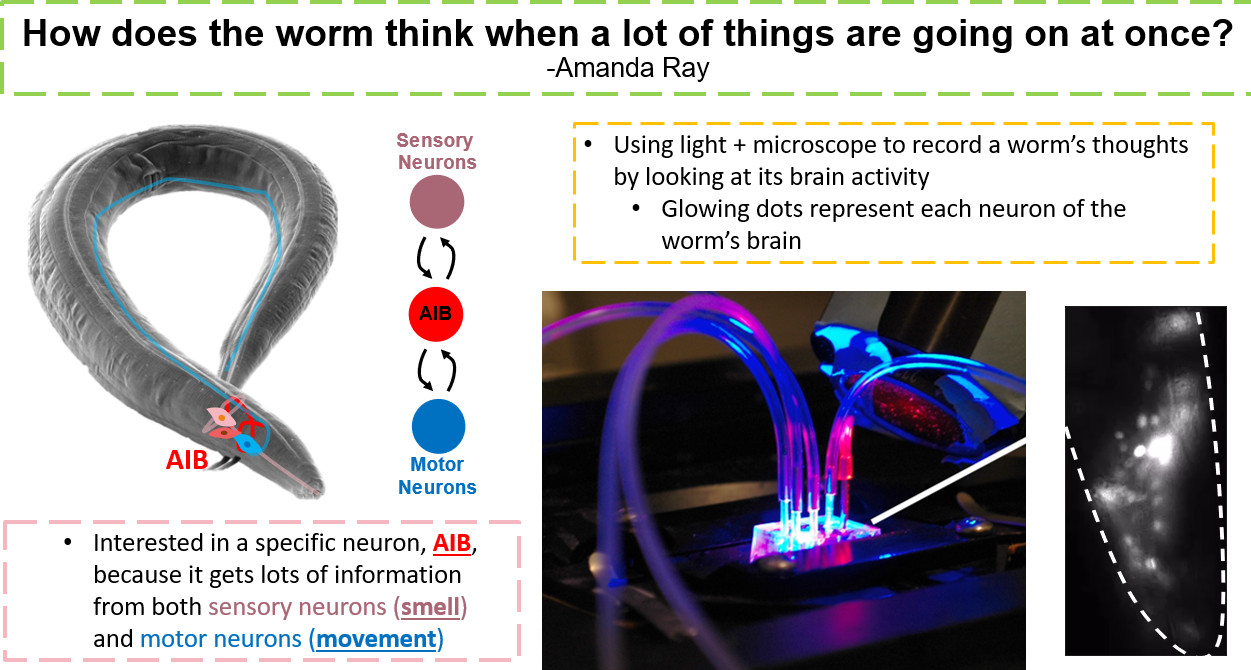Research
We live in a dynamic, and at times unpredictable environment. In order to maximize our use of the environment, we must be able to generate both novel and predictable behaviors to engage with the world around us. Our lab is interested in the cellular and genetic mechanisms that drive novel and innate behaviors, and how organisms sense and adjust to environmental variability. To address these issues, we use two model organisms: nematodes and spiders.
The nematode C. elegans has been a useful genetic and developmental tool for understanding fundamental questions in behavioral genetics, and is one of the few animals to have its complete neuronal architecture mapped. By using a variety of genetic tools to manipulate and observe the activity of the neurons in this network, we hope to understand how behavioral novelty arises and adjusts to changing environmental and internal states..

Drawing by Julie Simpson & Benjamin de Bivort, for their commentary on the lab’s recent spider web-making analysis.
Complex behaviors are often built by a pattern of simpler behaviors. Our lab uses the orb-weaving behavior of the spider U. diversus to understand how neuronal networks can encode a behavior that ultimately results in the elegant geometry of an orb-web. Orb-weavers do not use their vision for web-construction, and are thought to use path integration and spatial memory to map out their environment and influence their decisions. By using a combination of innovative behavioral, neuronal, and genetic approaches, we hope to understand how this behavior is encoded and adjusts to environmental input.


How do spiders build their webs?
We study the behavior, neural circuits, and genetics of the hackled orb-weaver (Uloborus diversus). Web-making is a highly structured, complex, innate behavior occurring over multiple timescales. Its small brain, roughly the size of a fly’s, offers a tractable system for studying how neural circuits generate such complex behaviors.
In recently published work, we investigated the sequences of leg movements employed by the spider during each of the geometric stages of web-building.


